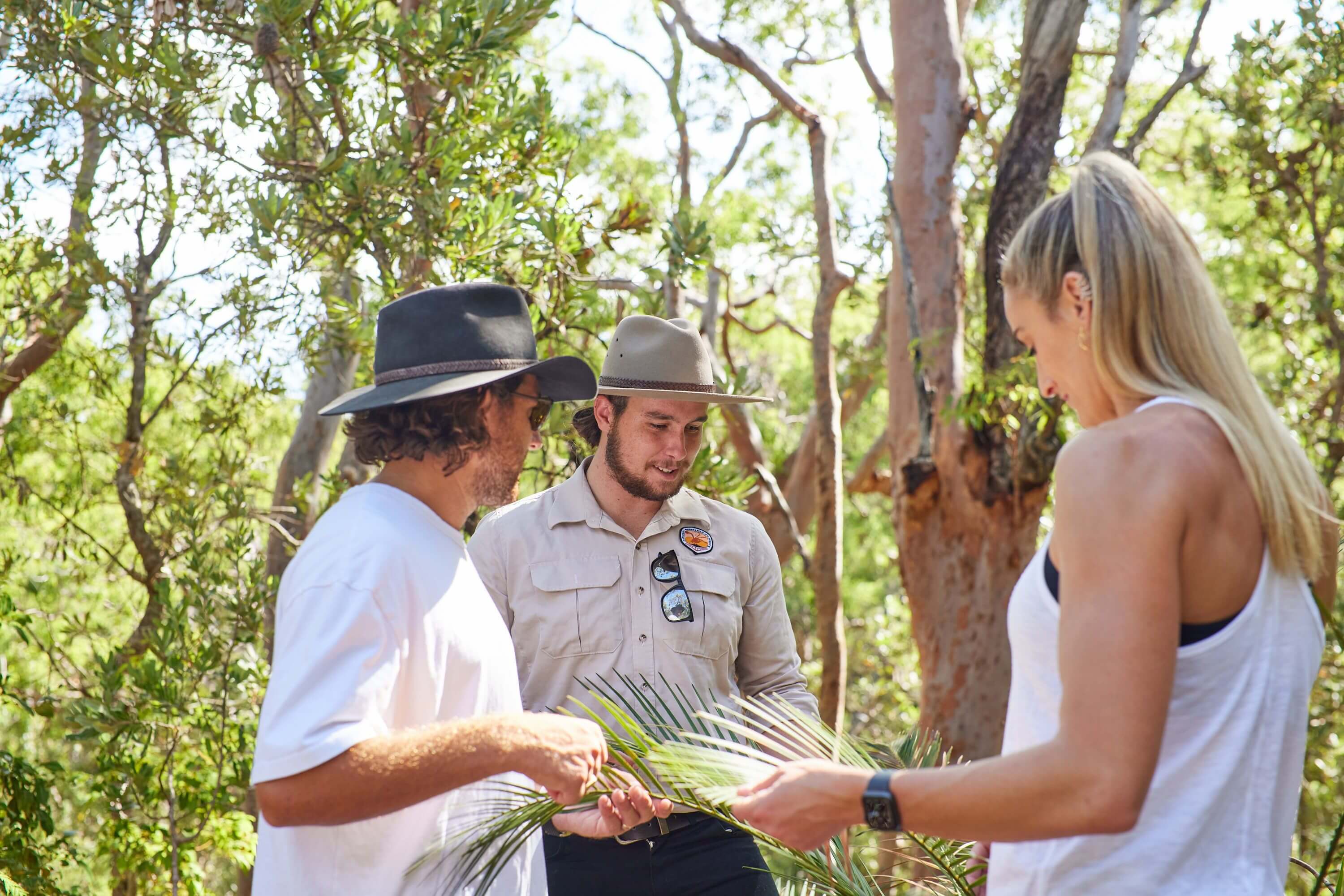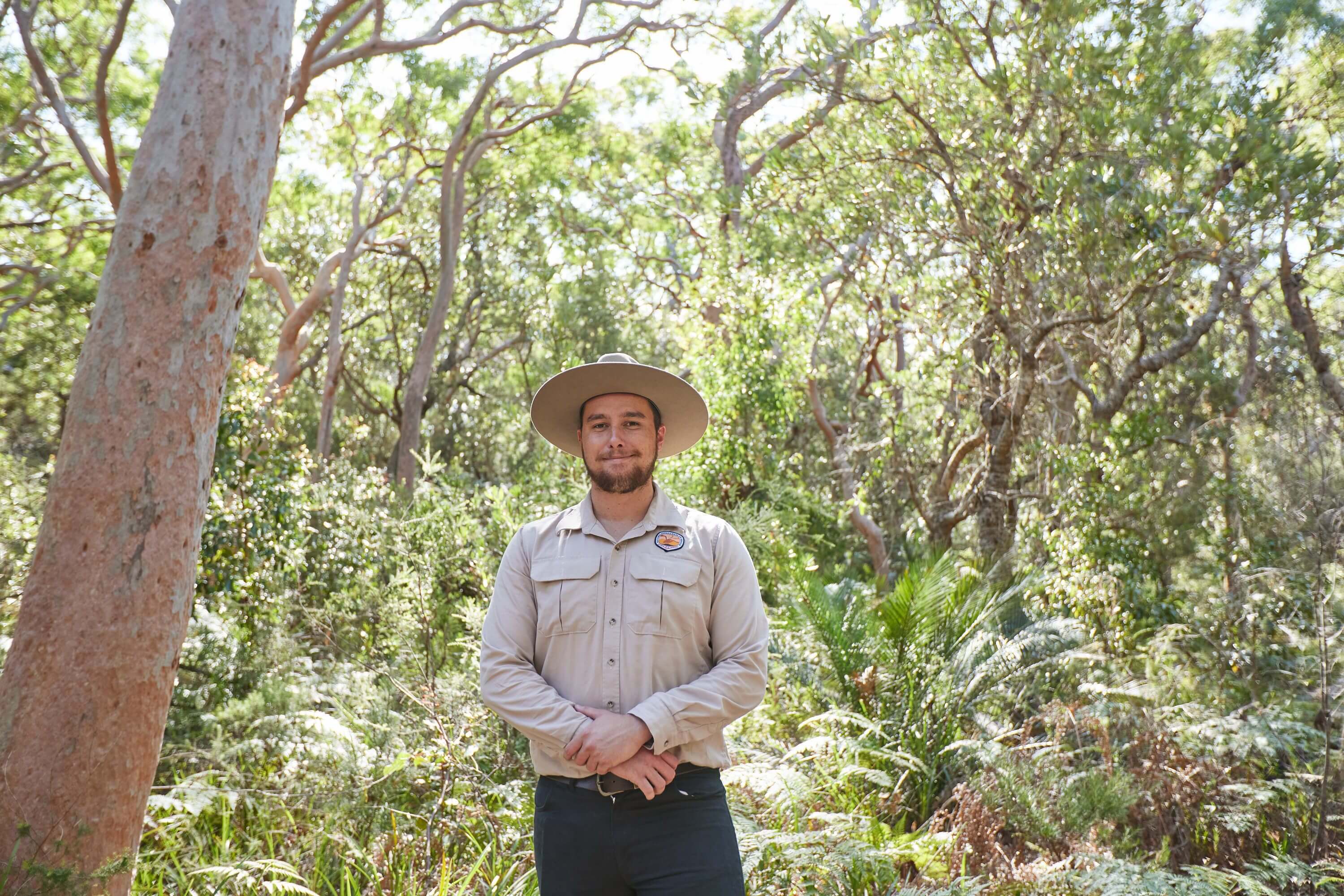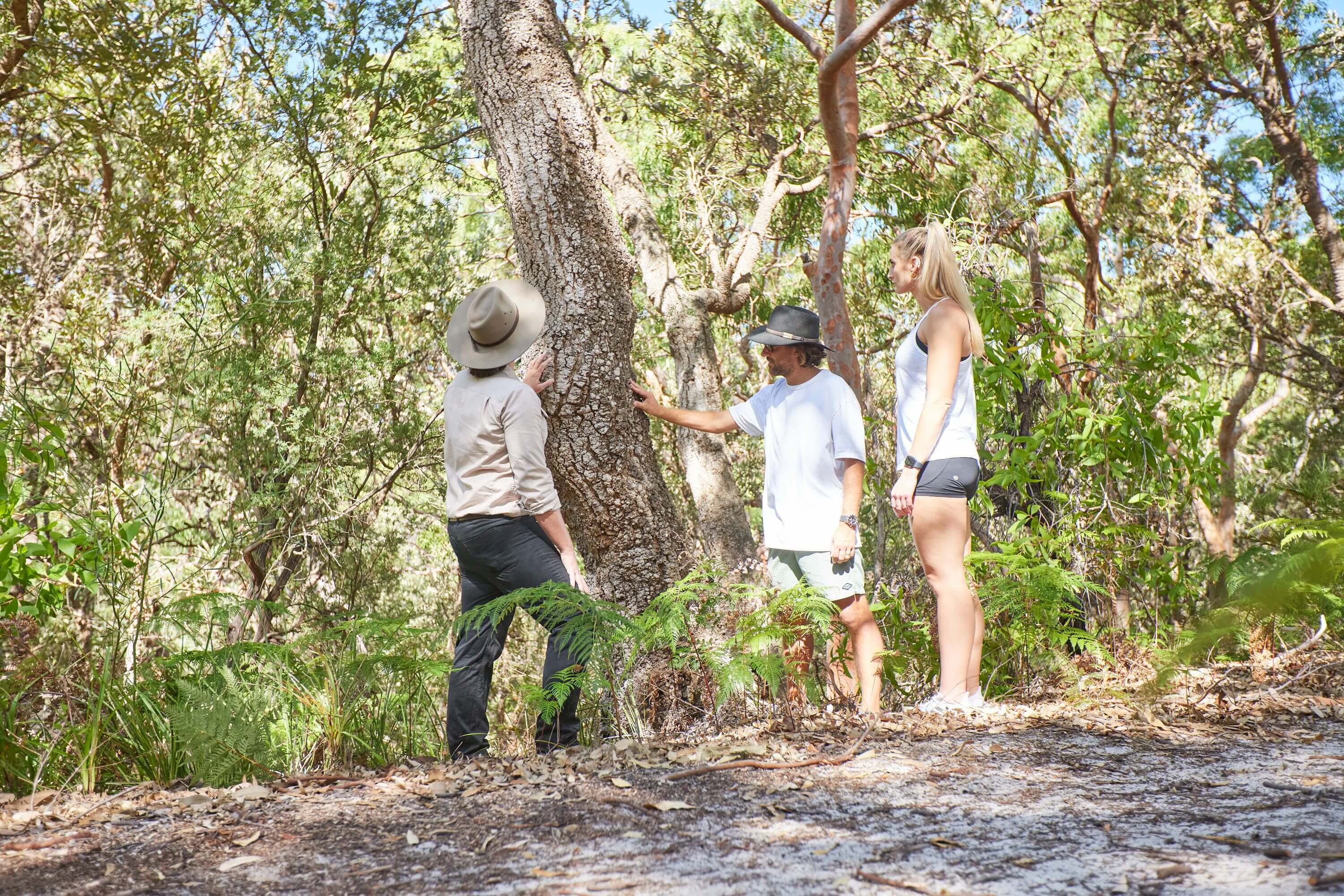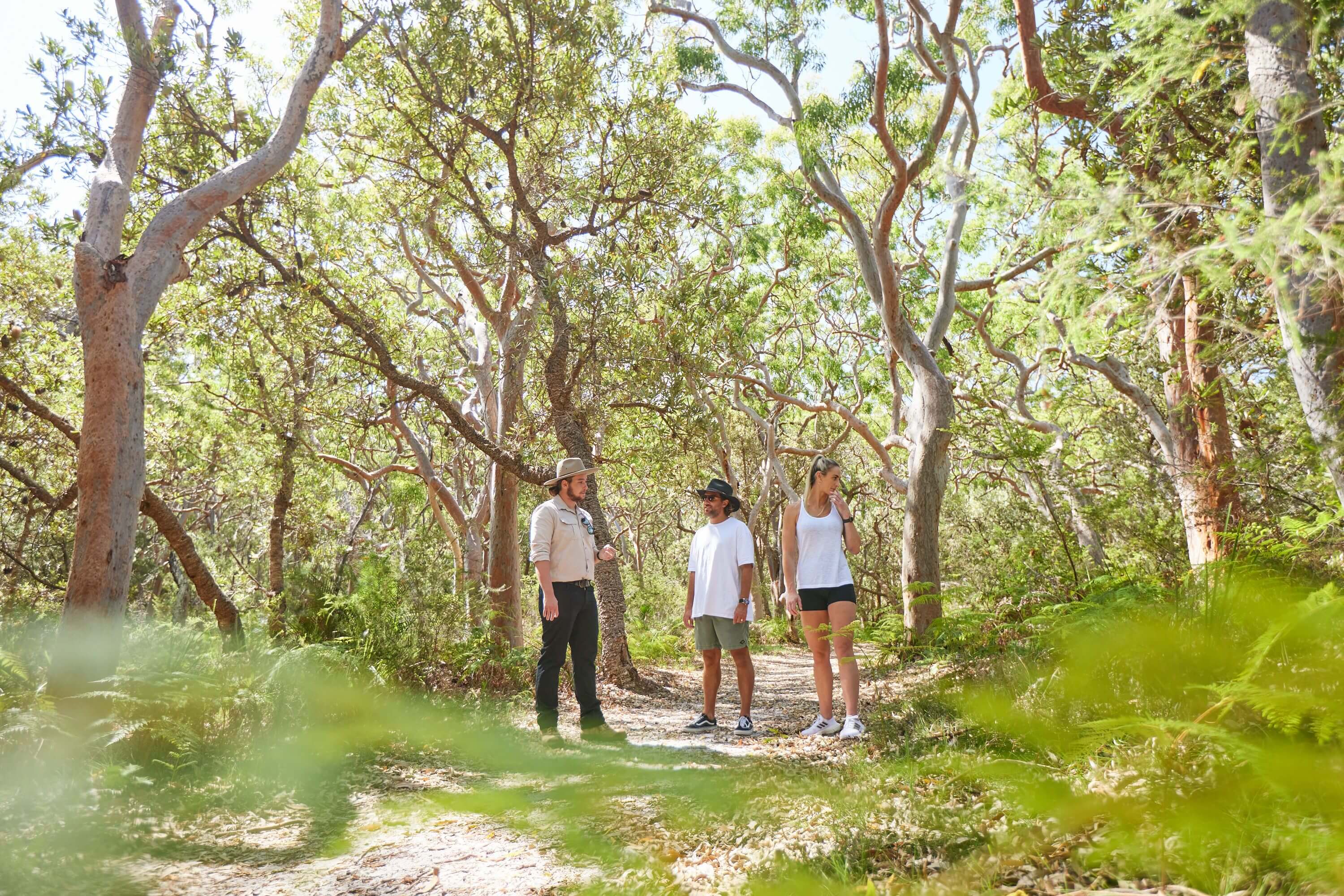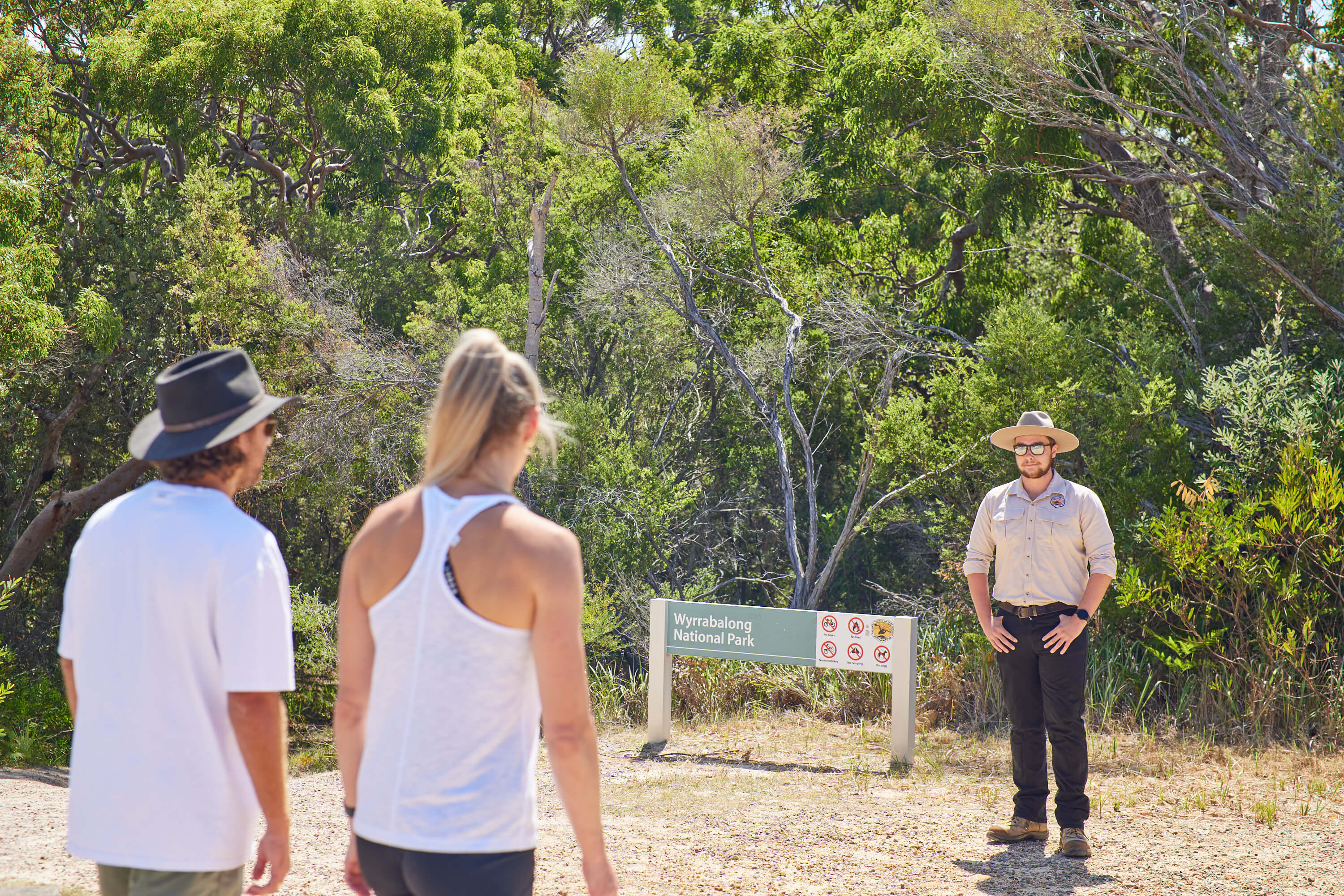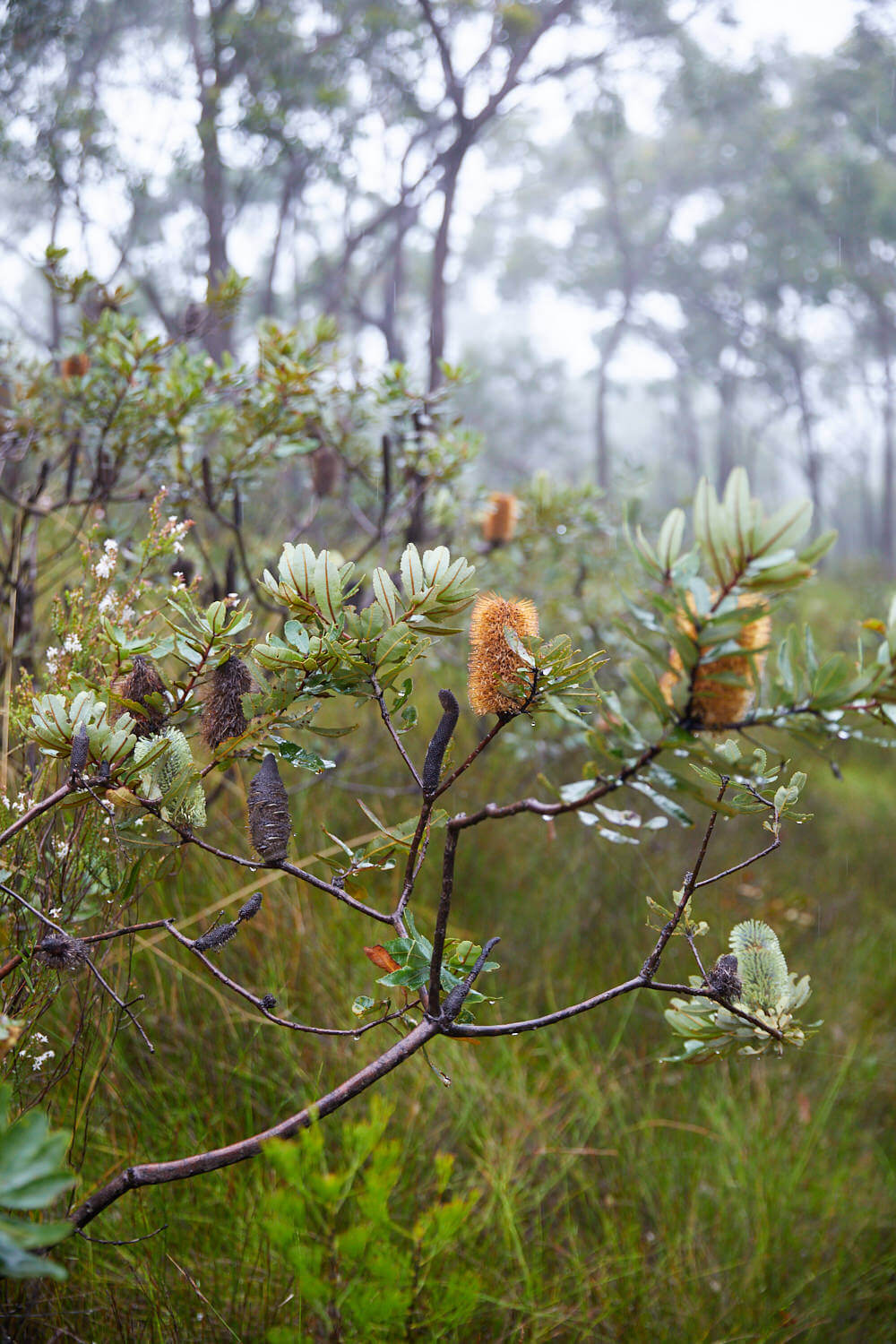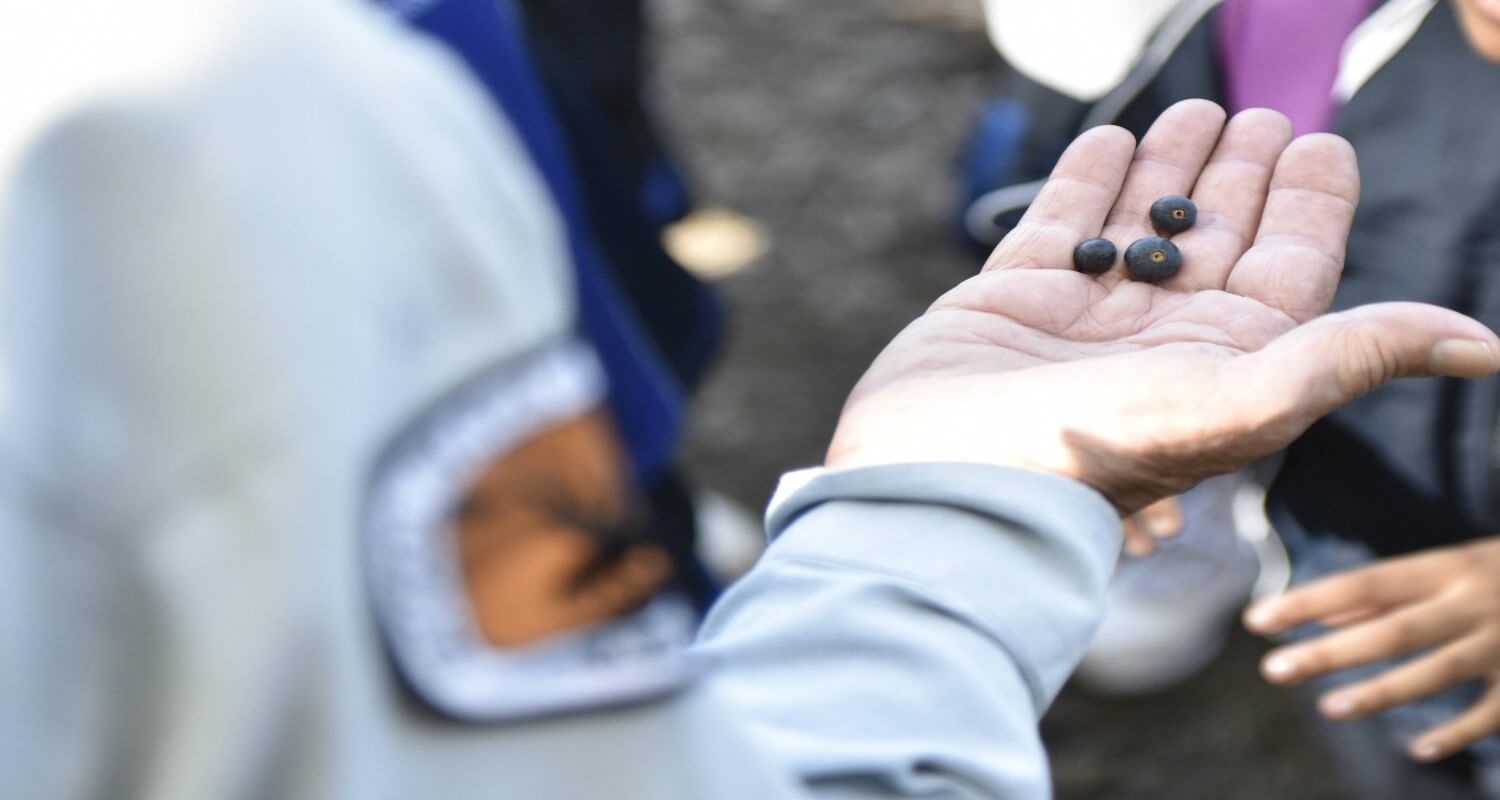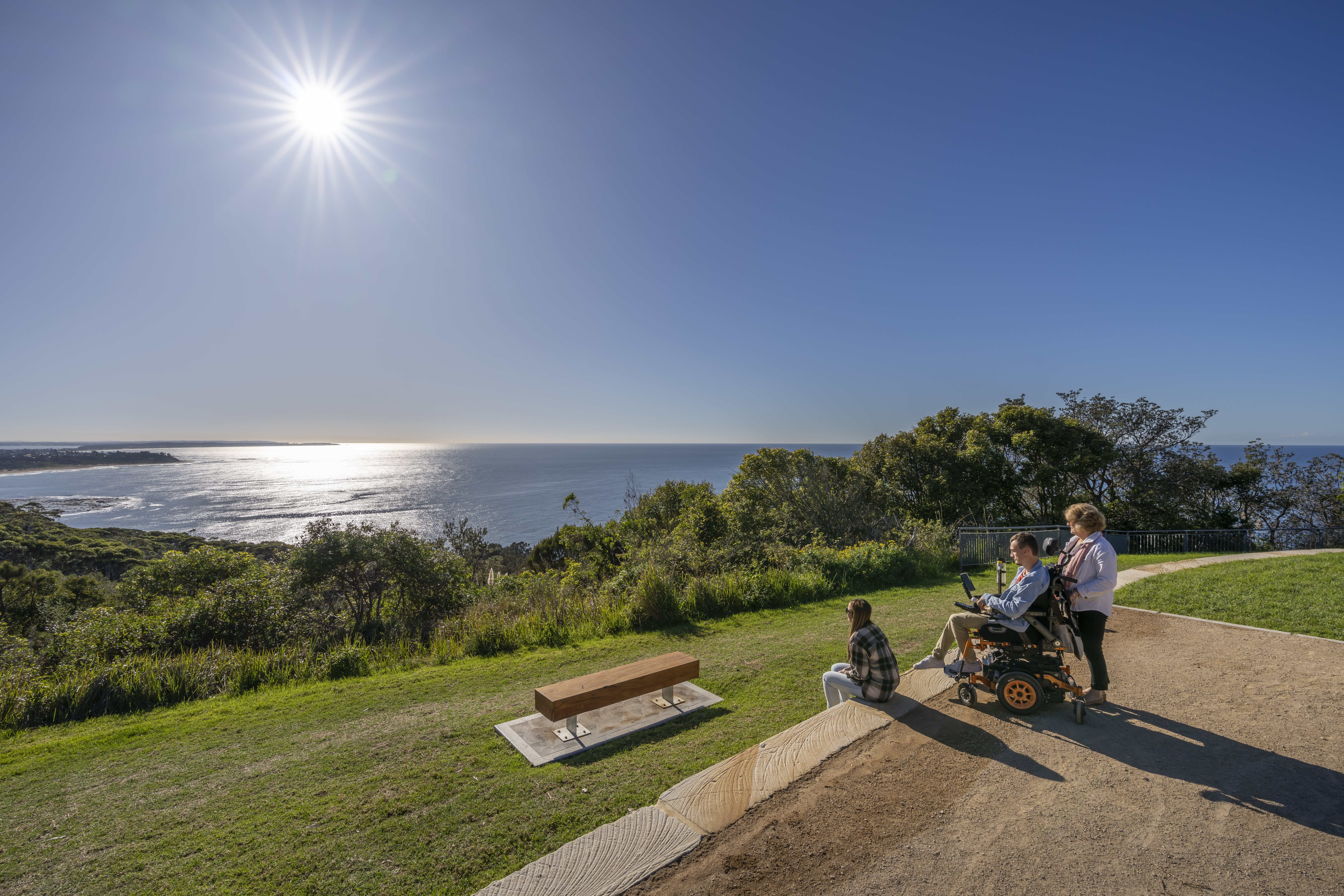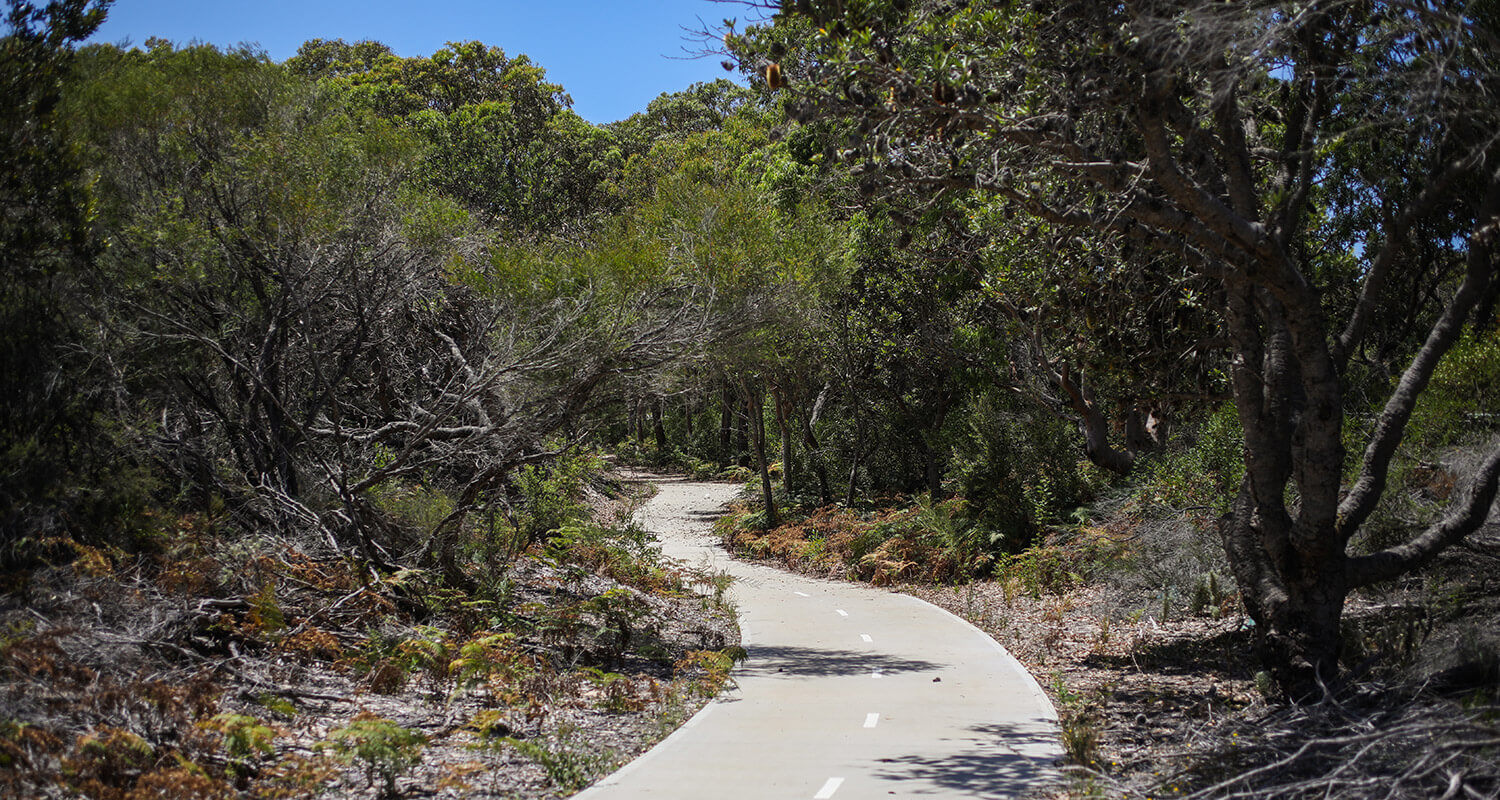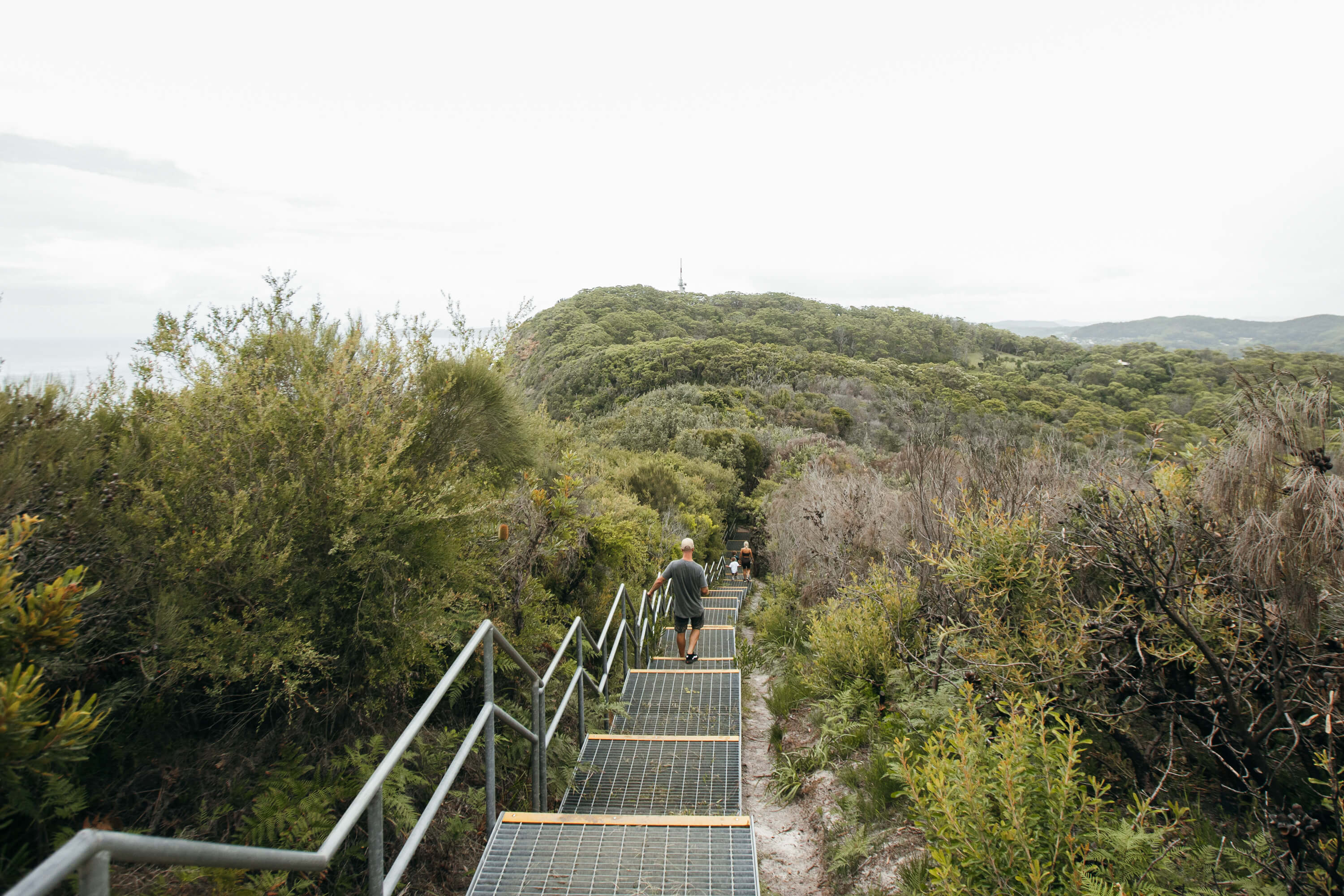How seasonal are the wildflowers and edible plants you'll find in national parks on the Central Coast?
They massively change depending on the seasons, and even just on the weather patterns and things like that. I guess it's an Aboriginal thought: everything is cyclic, it all happens in circles and repeats over and over again. So you can sort of tell when certain flowers are going to be appearing at certain times, and those certain flowers flowering means certain things. Take something as simple as a Banksia Flower: it means that there's going to be mullet in the water.
The Central Coast is one of the best places around to see the Flannel Flowers as well, which people come from all places, different countries to see.
What about bushtucker?
Again, take the Banksia: you can boil that in water and drink that and get a sweet tea. When the flowers are really fresh, you can just about squeeze the nectar out of the flowers and lick it straight off your hand like honey.
Then there's the Dianella caerulea, and it was really popular with the Aboriginal people because there's little sort of purple berries, which are sometimes sweet. These fruits were full of seeds, so they ate the fruit and then spat the seeds out and left those trails of seeds behind them. And when those seeds grew into plants for the next year, the same Aboriginal people walked down the same path and plucked the fruit off the new plants that they farmed, basically.
Native ginger obviously has the same medicinal uses as everyday ginger. If we have got a bit of a cold or an upset belly or something like that, you can chop up that ginger and throw it into a tea making medicine.
Do you have any tips for travellers and locals to be more conscious when they explore the region? How they can be more mindful in the national parks and ultimately more respectful of our environment?
Tread lightly and leave the area better than it was when you arrived. It's an important idea held pretty dear to Aboriginal people Australia wide: we don't believe in ownership, the land owns us.
Just think before you do things. Something as simple as snapping a branch with a tree or pulling a leaf of the tree can be more than enough to cause catastrophic damage. Whether it's just an injury that scars off and causes an infection or can be as drastic as kills the plant.
And even if you do have the knowledge, and you know things that you can touch, the things that you can't touch, only take enough for yourself: make sure you're leaving enough to the animals and the plants and insects and everything else around you. They needed a lot more than we do. You know, there's not that many of these places left unfortunately. And if we don't protect them, we're gonna lose them.
What is the most special thing about the Central Coast?
It would have to be the bushland. It's such a special place for the bush. You know if you think about what is either side of it - Newcastle and Sydney - there's not much bushland there, but the Central Coast is like this amazing pocket of such a diverse range of bushland. Whether it be beautiful sand spits and little sand islands where some of our wonderful endangered shorebirds and things like that nest, whether it be the rainforest, or coastal rainforest, it's just about got anything you would need: some of the best bushtucker, some of the best sites.
It's a really, really special place.




